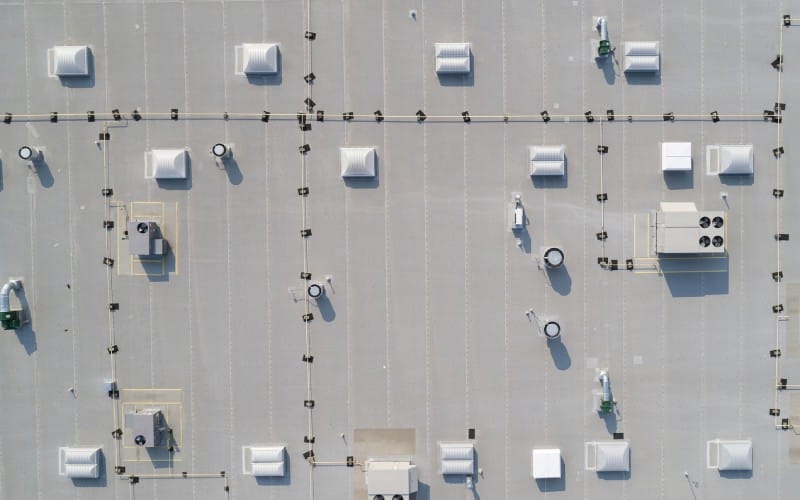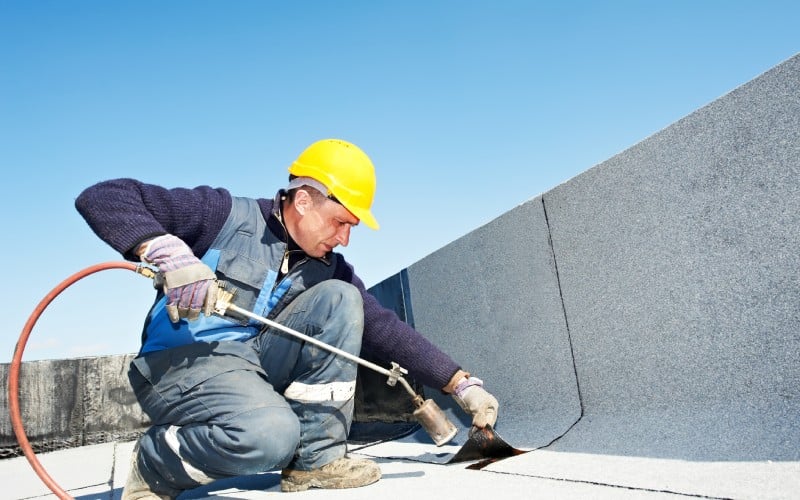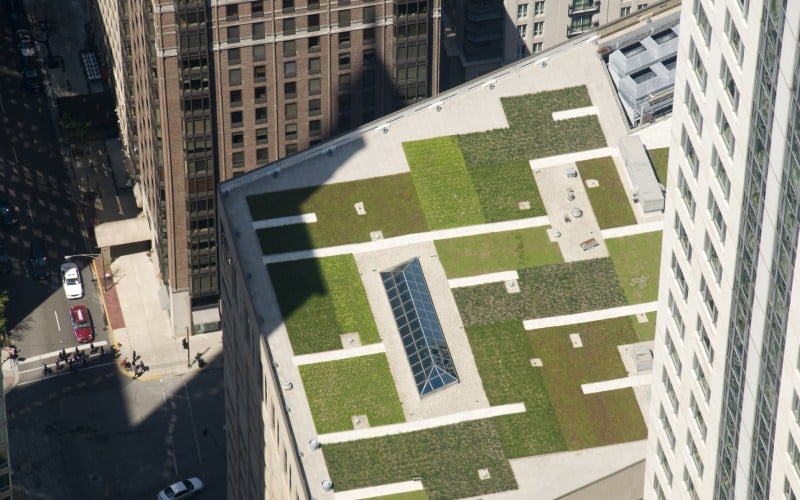500 Hood Road, Suite 320Markham ONL3R 9Z3

Canadian commercial buildings need resilient and dependable commercial roofing systems to withstand the weather extremes and other forces they face. Certain commercial roofs tend to be better suited to meet these heavy demands.
The numbers of different types of commercial roofing in use can vary and change over time, depending on specific building needs, industry trends, technological advancements, regional preferences, and other factors.
Choosing the best commercial roof system involves considering various factors. Climate plays a pivotal role; regions with heavy snowfall, high temperatures, high winds, or other extreme weather will have additional needs to address.
Budget constraints may impact material choices and maintenance expenses. Sustainability goals may lead to green roof options.
Consulting with roofing professionals, evaluating life cycle costs, and considering long-term durability and maintenance costs are essential steps in determining the optimal commercial roof system for your specific circumstances.
Local building codes and regulations may specify materials, insulation requirements, and even address considerations like wind and snow loads based on the region's climate, to address safety, structural integrity, and environmental considerations.
The building's use and occupancy influence roofing choices, too. Structures housing heavy machinery may demand robust options like Built-Up Roofing or metal roofs, while low-traffic roofs benefit from single-ply membrane systems. Specific occupancies, such as data centers, necessitate specialized roofing for precise temperature control, while offices may prioritize energy-efficient solutions for cost-effectiveness.
Built-Up Roofing (BUR) is the most widely used and popular choice for commercial buildings due to its durability, weather resistance, and other attributes.
A BUR roofing system is characterized by its multiple layers, providing durability and weather resistance, typically consisting of multiple layers.
The core of a BUR system is built with layers of bitumen, a sticky and viscous substance derived from crude oil. This bituminous mixture forms a waterproof barrier that shields the building from the elements. Between the layers of bitumen, a reinforcing material such as fibreglass or polyester adds strength and stability to the roofing structure, enhancing its ability to withstand the harsh Canadian climate. The top layer, or surfacing material, is usually gravel or aggregate, acting as a protective and insulating shield.

Several factors contribute to the widespread use of Built-Up Roofing.
BUR systems are known for their longevity, potentially lasting as long as 25 to 30 years. The multiple layers and robust materials make them highly resistant to damage from snow, rain, and hail. BUR systems are also relatively easy to maintain, and repairs can be made by adding additional layers of bitumen and reinforcing materials. The aggregate or gravel surfacing on BUR roofs helps regulate temperature by reflecting sunlight and reducing heat absorption, offering good energy efficiency. Similarly, with the conventional modified bitumen roofs.
The longevity, ease of maintenance, and energy efficiency make BUR systems relatively cost-efficient, providing cost savings for businesses.
While Built-Up Roofing is the most common choice, other roofing systems are also common.
TPO (thermoplastic olefin), EPDM (ethylene propylene diene terpolymer) and PVC are popular single-ply membrane options. These lightweight and flexible materials offer excellent resistance to UV rays, are puncture-resistant, and can be cost-effective. These are popular for retail building applications, schools and recreational facilities.
Metal roofing systems, typically made of steel or aluminum, are valued for their durability, longevity, and resistance to fire. They are chosen when there are higher risks of fires. Metal roofing is also popular for industrial structures and warehouses which have large roof spans and require a robust, low-maintenance roofing solution capable of withstanding environmental stresses.
Increasingly popular in urban environments, green roofs consist of a layer of vegetation over a waterproofing membrane. These roofs provide insulation, absorb rainwater, and contribute to environmental sustainability. Green roofs help businesses and municipalities enhance energy efficiency, reduce urban heat island effects, and promote environmental sustainability.

When choosing a Built-Up Roofing (BUR) system, certain considerations need to be addressed to ensure optimal performance.
Ensure proper installation by employing experienced contractors with expertise in BUR roofing, and consult with a roofing engineer on design. Consulting with an engineering firm during the planning phase helps tailor your Built-Up Roofing system to your building's specific needs, ensuring it can withstand local weather conditions.
Regular maintenance is key, to address issues like ponding water, which can compromise the roof's integrity. Professional inspections, ideally conducted annually, can detect potential problems early, prevent costly repairs, and can direct maintenance activities for maximum benefits. Be sure to also factor in insulation needs for energy efficiency.
ABSI offers a range of engineering building envelope services, including commercial roofing services such as roof safety audits and annual inspections, roof system designs, roof asset management, and roof inventory planning programs. We can help you choose the right roofing type for your needs, assist in the design, and provide expert audit and inspection services, helping you get the most out of your roofing system.

Naji Hassan, a renowned professional in Building Science and Engineering, brings a wealth of knowledge and experience to his field. Educated at Beirut Arab University and Harvard Business School Online, Hassan has honed his expertise in structural and municipal engineering, building science, and business management. As the President of Accent Building Sciences and an experienced Senior Project Manager, he has made significant strides in building envelope engineering, building condition assessments, and energy retrofit programs. His commitment to innovation and excellence is evident in his approach to large-scale project management and his active participation in industry organizations. Hassan is not only a leader in his field but also a prolific writer and thought leader. He regularly shares his insights and experiences through articles on LinkedIn, which can be found at LinkedIn Articles. Additionally, he maintains a blog where he delves deeper into various aspects of building science, accessible at Accent Building Sciences Blog. Outside of his professional pursuits, Hassan enjoys travel, golf, languages, gardening, and music, reflecting his diverse interests and well-rounded character. Naji Hassan's journey in building science and engineering is not just a career but a testament to his lifelong dedication to learning, teaching, and inspiring others in his field.

500 Hood Road, Suite 320Markham ONL3R 9Z3